 W
WThree genera of geckos are native to New Zealand – Hoplodactylus, Naultinus and Toropuku.
 W
WThe Auckland green gecko is a species of gecko found only in the northern half of the North Island of New Zealand, except north of Whangaroa. The Wellington green gecko, formerly considered a subspecies, is found in the southern half of the North Island and the two ranges do not overlap. Its length is up to 145 mm, snout to vent.
 W
WThe black-eyed gecko also known as Whitaker's sticky-toed gecko, is an alpine gecko, discovered in 1970, which inhabits high-altitude mountains in three areas of the South Island of New Zealand. It is the highest-altitude lizard species in New Zealand, living up to 2,200 m (7,200 ft) above sea level.
 W
WThe brown skink is a species of skink native to New Zealand.
 W
WThe Canterbury gecko is a gecko found in the South Island of New Zealand. It is also known by the Maori names Waitaha gecko and Moko-pāpā, and as the Brown gecko. They were earlier placed in a different genus and called Hoplodactylus brunneus before further study split the genus Hoplodactylus into six genera, with some groups close to the former Hoplodactylus maculatus “Canterbury” being assigned to the new genus Woodworthia.
 W
WThe Chatham Islands skink is a species of skink in the family Scincidae.
 W
WThe copper skink is a skink of the family Scincidae that is endemic to the North Island of New Zealand.
 W
WThe cryptic skink is a nationally vulnerable species of skink native to New Zealand.
 W
WDactylocnemis pacificus, the Pacific gecko or Pacific sticky-toed gecko, is a species in the family Gekkonidae, endemic to the North Island and offshore islands of New Zealand.
 W
WDuvaucel's gecko, Hoplodactylus duvaucelii, is a species of lizard in the family Diplodactylidae.
 W
WFalla's skink or the Three Kings skink is a species of lizard in the family Scincidae.
 W
WThe Fiordland skink is a species of skink endemic to the Fiordland temperate forests ecoregion of South Island, New Zealand. The Fiordland skink is found on one mainland locations and the exposed rocky shores of numerous islands along the Fiordland coast. Their distribution has declined due to introduced predators. Currently it lives only on foreshore rocks and boulder beaches on the Fiordland coast. It is abundant, even extremely abundant, in areas free from mammalian predators, but it barely survives where predators are present.
 W
WThe forest gecko is a species of gecko. Granulatus refers to the granular texture of the skin. Its Māori name is moko pirirākau. It is endemic to New Zealand, found in all areas except the Far North, Marlborough, and Canterbury.
 W
WThe grand skink is an endangered species of large skink endemic to the central Otago region of New Zealand.
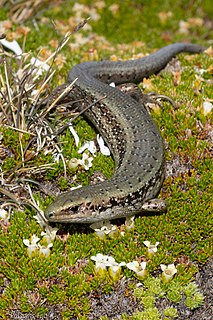 W
WThe green skink is a species of skink native to New Zealand.
 W
WThe harlequin gecko is a species of gecko, a lizard in the family Diplodactylidae. The species is endemic to Stewart Island/Rakiura in the far south of New Zealand, where it was discovered in 1969. In terms of distribution it is one of the southernmost gecko species in the world.
 W
WHoplodactylus is a genus of gecko endemic to New Zealand, one of the seven genera of geckos found only in New Zealand. Hoplodactylus comprises two species of large to gigantic brownish lizards, one extinct and one surviving only on predator-free islands.
 W
WThe jewelled gecko is a threatened species of lizard in the family Diplodactylidae. The species is endemic to the South Island of New Zealand.
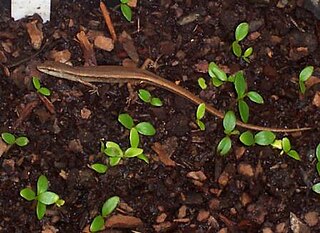 W
WThe delicate skink, dark-flecked garden sun skink, garden skink or plague skink is a skink of the subfamily Lygosominae, originally from Eastern Australia. In its native range, and in New Zealand, it is also known as the rainbow skink, a term that usually refers to the African Trachylepis margaritifera, also a member of the Lygosominae.
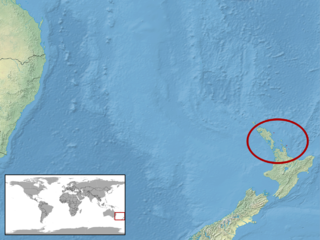 W
WThe marbled skink is a species of skink in the family Scincidae. The species is endemic to New Zealand.
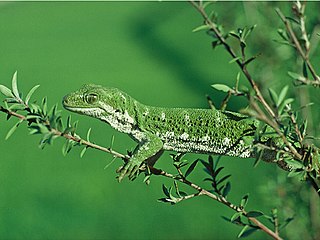 W
WThe Marlborough green gecko, also known as the manuka gecko,(Naultinus manukanus) is a small species of gecko endemic to New Zealand. It grows to a maximum of 70mm, and is green, with some individuals displaying gold markings. The underside of the gecko is a lighter green in females, and silvery in males. The holotype is in the collection of the Museum of New Zealand Te Papa Tongarewa.
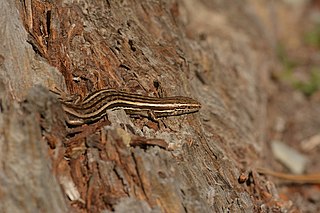 W
WThe McCann's skink is a species of skink native to New Zealand.
 W
WNaultinus is a genus of geckos that are endemic to New Zealand. On account of their striking colouration, species in the genus Naultinus are commonly known as green geckos. There are eight described species in the genus. Species in the genus share a number of traits that set them apart as quite different from the rest of the world's two thousand odd gecko species, which are generally brown in colour, ovivaparous, short-lived and nocturnal. In contrast, Naultinus are green, ovovivaparous, live up to 30 years or more and are strictly diurnal. New Zealand has a temperate, maritime climate, and in terms of distribution Naultinus is one of the southernmost gecko genera in the world — some species live in habitats in the South Island which receive regular snowfall in winter. Animals in this genus possess several physiological and behavioural adaptations to cope with these periods of low temperatures and adverse weather.
 W
WThe Nelson green gecko or starry tree gecko is a species of the family Gekkonidae (gecko). The neotype is in the collection of the Museum of New Zealand Te Papa Tongarewa.
 W
WThe spotted skink is a nationally at risk species of skink native to New Zealand. The Spotted skink is currently known to be present in the Hawkes Bay, Wairarapa and Wellington regions as well as in Nelson, Marlborough and Canterbury. It is also present on Somes Island, Mākaro / Ward Island, North Brother Island and Stephens Island. Adult males and adult females of the species significantly differ in the snout-vent length with body sizes reaching 111mm. Females produce around 3 - 4 eggs.
 W
WThe New Zealand striped skink is a rare species of medium-sized skink endemic to New Zealand. The specific epithet means "streaked". The habitat of this species is native forest; they are often found under fallen rotting logs in the bush or under those remaining in pasture after the forest has been cleared. They are at least partly arboreal and have been found in the forest canopy among epiphytes and also in standing dead trees.
 W
WThe Northland green gecko or Gray's tree gecko is a species of gecko, a lizard in the family Gekkonidae. The species is found only in the Northland region of New Zealand, north of Whangaroa; it is one of the rarest and most highly sought after lizards.
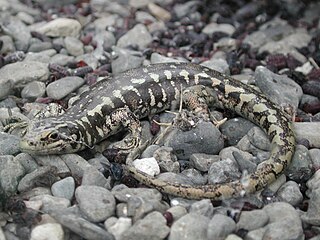 W
WOligosoma is a genus of small to medium-sized skinks found only in New Zealand as well as Norfolk and Lord Howe islands. Oligosoma had previously been found to belong to the Eugongylus group of genera in the subfamily Lygosominae; the Australian genus Bassiana appears to be fairly closely related.
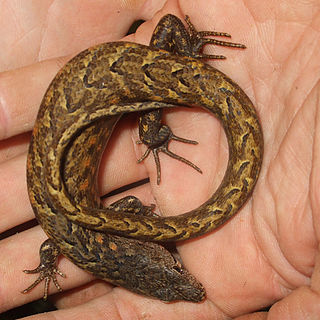 W
WThe chevron skink, is a large species of skink endemic to New Zealand, found only on Great and Little Barrier islands in the Hauraki Gulf. A cryptic forest dweller, it can hide underwater, and is under threat from introduced rats.
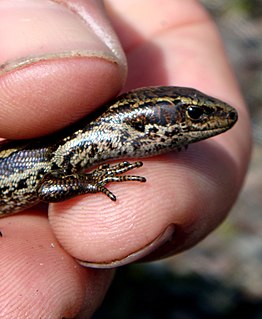 W
WOligosoma infrapunctatum, the speckled skink, is a species of skink in the family Scincidae. It is endemic to New Zealand.
 W
WThe northern spotted skink is a species of skink found in New Zealand.
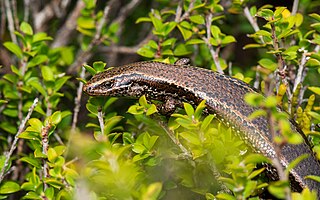 W
WThe southern skink is a species of skink in the family Scincidae. It is endemic to New Zealand.
 W
WGray's ornate skink is a species of skink found in New Zealand.
 W
WThe common skink is a species of skink native to New Zealand. Although historically classified as a subspecies of Oligosoma nigriplantare, it is likely to be given separate species status as data suggests it is a distinct species.
 W
WThe Otago skink is a rare, endangered species of large skink in the family Scincidae, found in the rocky canyons and grassy patches of Central Otago, New Zealand.
 W
WThe robust skink, Oligosoma alani, is a large, rare species of skink endemic to New Zealand. This species was once widespread throughout the North Island but has been wiped out in most parts of its former range by predation from several species of introduced rats - it now occurs naturally only on 6 small islands off the north-eastern coast of the North Island.
 W
WThe rough gecko is a species of gecko in the family Gekkonidae native to New Zealand. It is endemic to the Kaikoura Ranges.
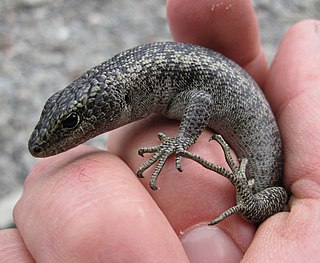 W
WThe Scree skink is a species of skink native to several sites throughout the South Island of New Zealand. A member of the family Scincidae, it was described by Geoff Patterson in 1997. It favours rocky habitats, particularly greywacke screes. Threats to scree skinks include predation by introduced mammals, weed encroachment, human interference and severe flood events.
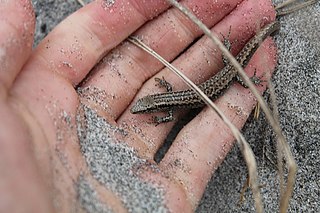 W
WThe shore skink, also commonly known as the short-tailed skink, Smith's ground skink, Smith's moco, and Smith's skink, is a species of lizard in the family Scincidae. The species is native to the northern half of the North Island of New Zealand.
 W
WThe Stephen's Island gecko, also known commonly as the Cook Strait striped gecko, Stephen's sticky-toed gecko, and the striped gecko, is a species of gecko in the monotypic genus Toropuku in the family Diplodactylidae. The species is endemic to New Zealand.
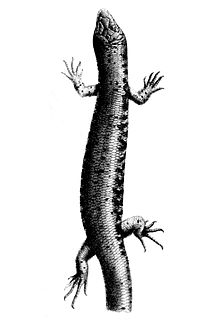 W
WSuter's skink, also known commonly as the black shore skink, the egg-laying skink, and Suter's ground skink, is a species of lizard in the family Scincidae. The species is endemic to New Zealand.
 W
WThe Takitimu gecko is a species of gecko in the family Gekkonidae found in the Southland region of New Zealand. It is endemic to New Zealand.
 W
WThe Te Kakahu skink is a critically endangered species of skink native to New Zealand. When discovered, the entire species was inhabiting a single patch of clifftop vegetation on Chalky Island in Fiordland National Park.
 W
WTuatara are reptiles endemic to New Zealand. Although resembling most lizards, they are part of a distinct lineage, the order Rhynchocephalia. Their name derives from the Māori language, and means "peaks on the back". The single species of tuatara is the sole surviving member of its order, which originated in the Triassic period around 250 million years ago and which flourished during the Mesozoic era. Their most recent common ancestor with any other extant group is with the squamates. For this reason, tuatara are of interest in the study of the evolution of lizards and snakes, and for the reconstruction of the appearance and habits of the earliest diapsids, a group of amniote tetrapods that also includes dinosaurs and crocodilians.
 W
WThe Wellington green gecko is a species of gecko found only in the southern half of the North Island of New Zealand. It was previously considered a subspecies of the Auckland green gecko, and together called the common green gecko.
 W
WThe West Coast green gecko, Lewis Pass green gecko, or warty tree gecko is a species of the family Gekkonidae (gecko).
 W
WWhitaker's skink is a threatened species of skink, a lizard in the family Scincidae. The species is found only in New Zealand.
 W
WWoodworthia is a genus of geckos in the family Diplodactylidae endemic to New Zealand. It includes three species: All species are native to New Zealand.Woodworthia brunnea (Cope, 1869) – Canterbury gecko Woodworthia chrysosiretica (Robb, 1980) – gold-striped gecko, gold-stripe gecko, or golden sticky-toed gecko Woodworthia maculata (Gray, 1845) – New Zealand common gecko or Raukawa gecko
 W
WWoodworthia maculata, also known as the New Zealand common gecko or Raukawa gecko, is a species in the family Diplodactylidae. The specific name maculata means "speckled".
 W
WThe yellow-bellied sea snake is a venomous species of snake from the subfamily Hydrophiinae found in tropical oceanic waters around the world except for the Atlantic Ocean. For many years, it was placed in the monotypic genus Pelamis, but recent molecular evidence indicates it lies within the genus Hydrophis.